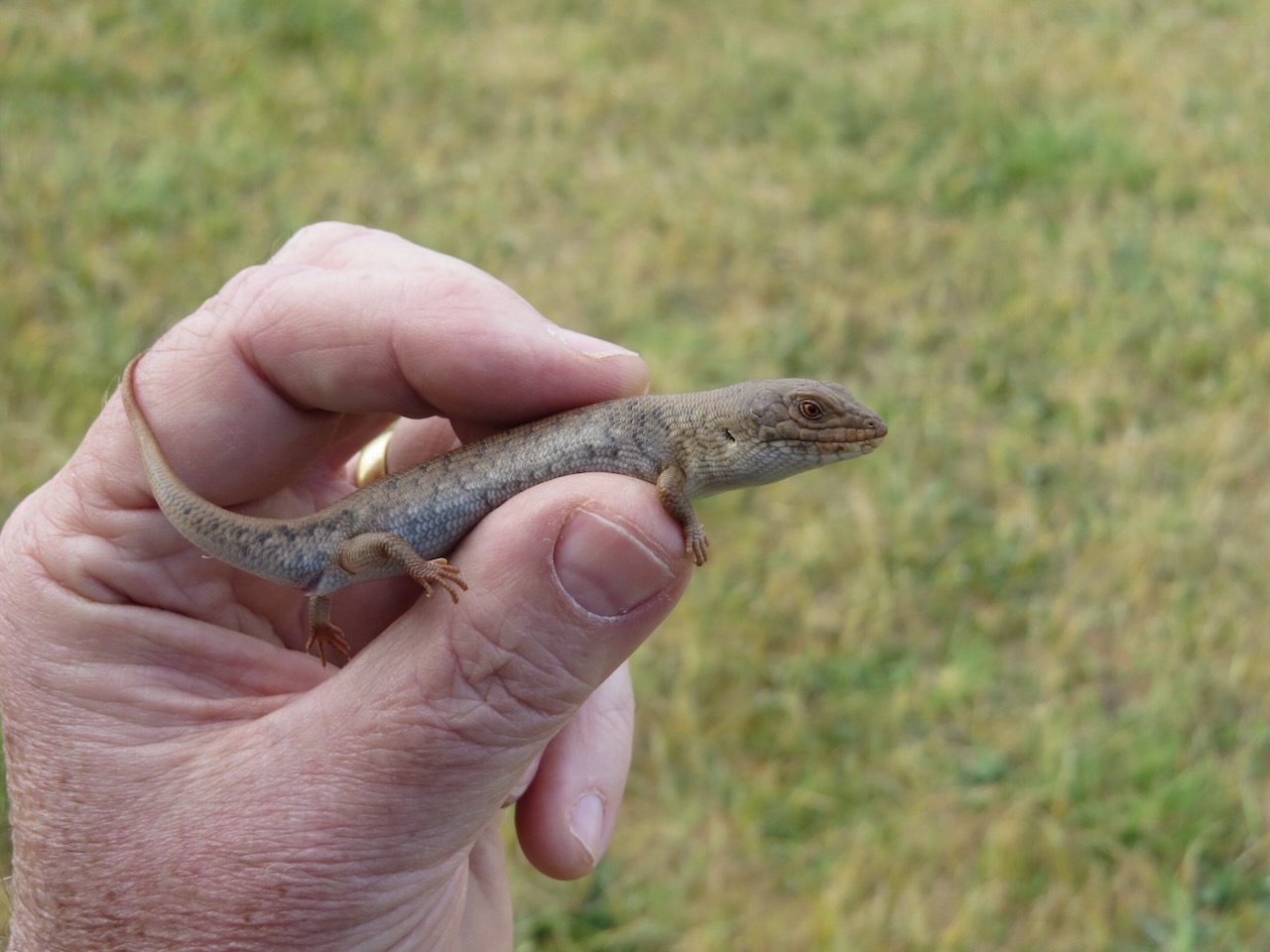The current study suggests that the three lizard populations would need more than two years to acclimatize, depending on latitude of origin.
The pygmy blue-tongue lizard (Tiliqua adelaidensis) is listed as endangered under Australia’s Commonwealth Environment Protection and Biodiversity Conservation Act of 1999 as well as the South Australian National Parks and Wildlife Act of 1972.
In 2020, South Australia’s Flinders University received a $AUD 400,000 grant to help bolster the reptile’s populations. At the time, Flinders University Associate Professor in Biodiversity Mike Gardner said that they believe that populations of the lizard, and especially the northern populations will go extinct with 560 years due to the effects of climate change. The climate models the researchers looked at suggested that the lizards would have to be moved south, and that is what they did.
In 2021, the researchers moved a population of 52 pygmy blue-tongued lizards to South Australia to determine how they would survive in a different ecological environment. They were placed in wooden burrows and monitored over the course of five years via video cameras.Their weight and basking habitats were also closely monitored.
Aussie Researchers Receive $400,000 Grant To Help Save Pygmy Blue-Tongued lizard
The current study suggests that the three lizard populations would need more than two years to acclimatize, depending on latitude of origin. The study, led by Ph.D. candidate Deanne Trewartha from the College of Science and Engineering, notes that the lizard is taking longer to acclimatize.
52 Pygmy Blue-Tongue Lizards Moved To South Australia To Determine Adaptability
“We need to understand how this species, which are highly dependent on body temperature, adapt to cooler and often wetter seasons in these new environments,” Ms. Trewartha, from the Flinders University Lab of Evolutionary Genetics and Sociality (LEGS) research group said in a statement released by Flinders University.
“Despite this acclimatization delay, our results indicate that these lizards may cope with translocation as a mitigation strategy in the longer term” Trewartha said “Further monitoring of the three lineages will continue to see any behavioral variations in wet versus dry seasons and the long-term behavioral acclimatization periods for translocations.”Each group of lizards exhibited differing behaviors based on latitute during the time of translocation, with the northern lizards focused on surface activity. They were only observed to be active on the surface during moderate conditions and also when the burrow was humid in both the wild site as well as the translocaiton site. This suggests that this gourd of lizards have not adjusted to their new environment.
“Despite this acclimatisation delay, our results indicate that these lizards may cope with translocation as a mitigation strategy in the longer term” the researchers wrote in their paper.
The complete paper, “Lizards, Lineage and Latitude: Behavioural Responses to Microclimate Vary Latitudinally and Show Limited Acclimatisation to a Common Environment After Two Years” can be read in the journal Biology.
The pygmy blue-tongue lizard is a small skink that looks just like the larger blue-tongue skink (Tiliqua scincoides intermedia), but with a few noticeable exceptions. It does not have a blue tongue. Its tongue is pink. It is grayish-brown and orange-brown in coloration and has a short tail. Its total body length is less than 15 centimeters in length. The skink is brown in coloration and measures about 10 cm in length, with the males shorter and stouter than the females. The head is quite large and has scales that look like armor plates. The coloration of the back of the lizard ranges from light gray brown to yellowish brown to orange tan or chocolate brown. The lizard inhabit grasslands and live in unused spider burrows. They spend the majority of their time in or around the burrows and wait for prey items to pass by.
They are found in trapdoor spider holes on native grasslands in Australia. For decades the pygmy blue-tongue lizard was thought to have gone extinct until a specimen was discovered inside the belly of a dead brown snake in 1992. A wild population was later found in Burra, Australia.



